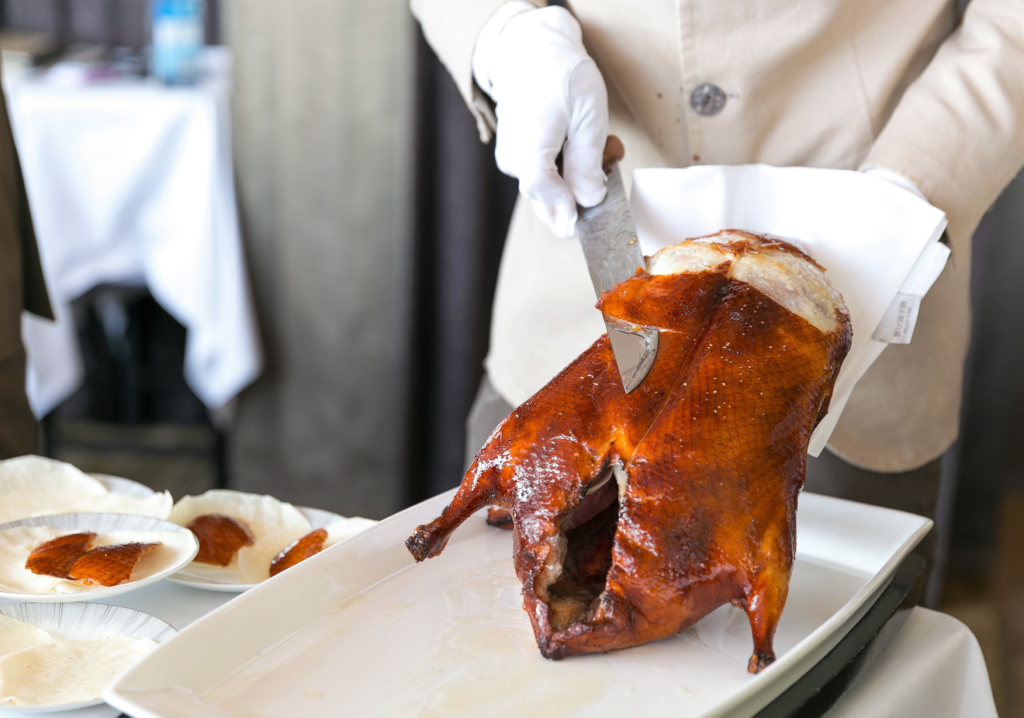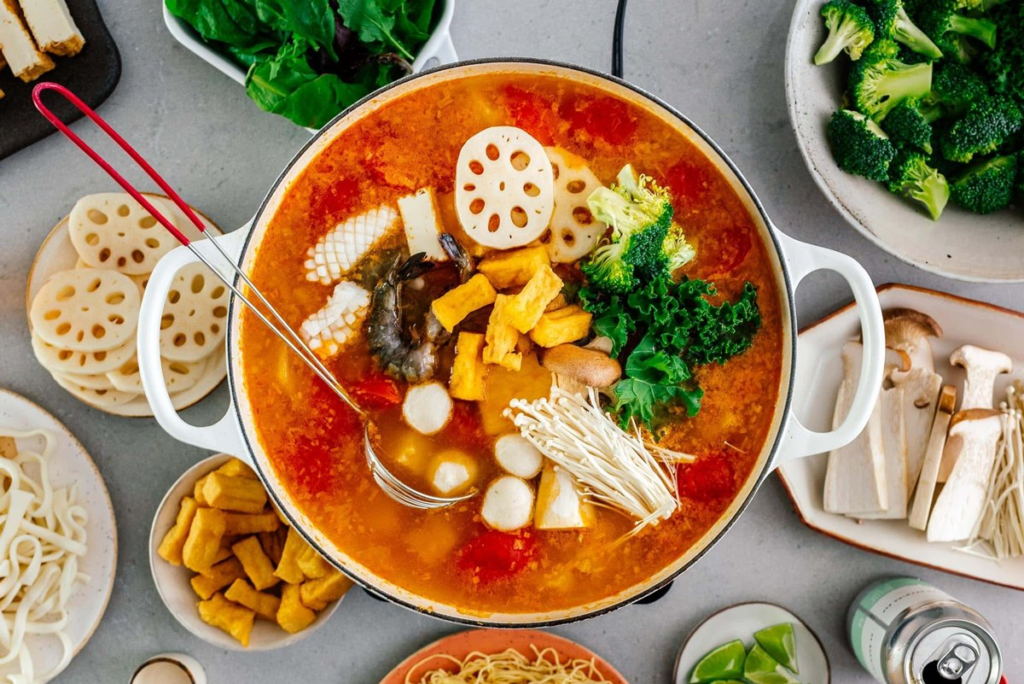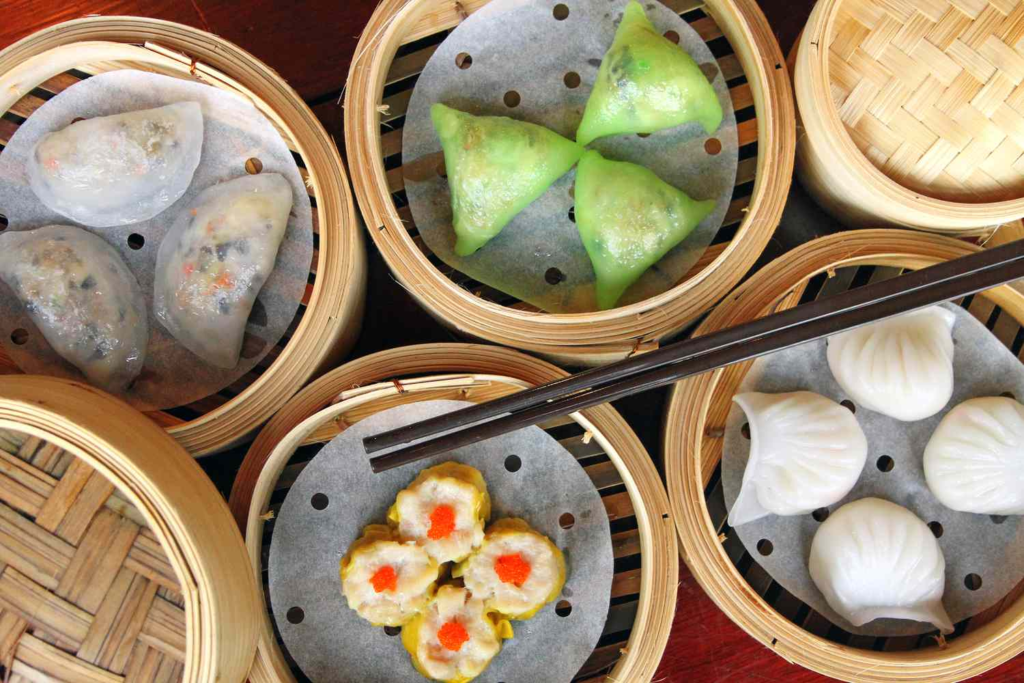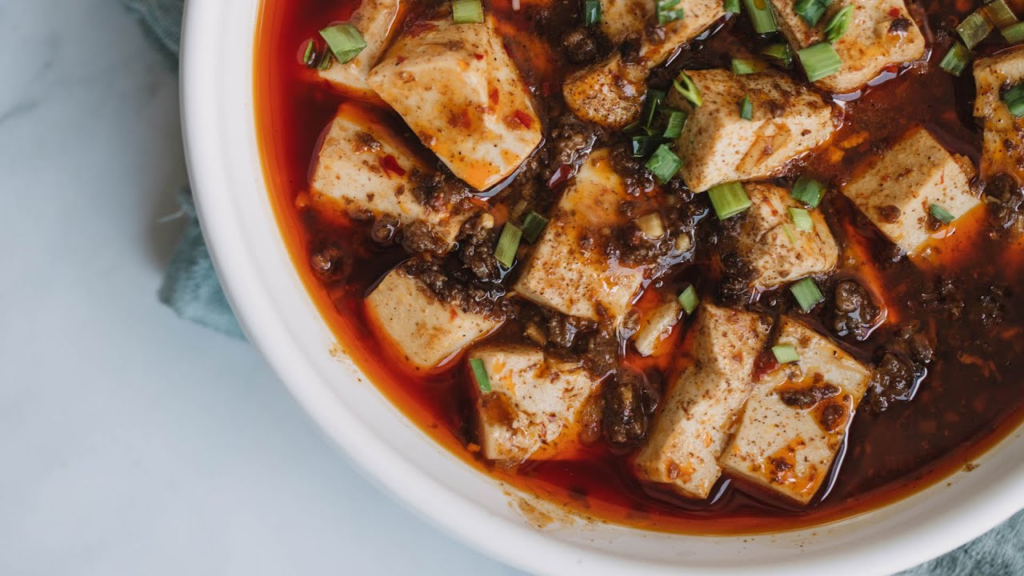Chinese Cuisine . China is a country with a culinary tradition as vast and varied as its geography. With a history spanning thousands of years, Chinese cuisine is a reflection of the diverse cultures, climates, and ingredients found across the country. From the fiery dishes of Sichuan to the delicate flavors of Cantonese cuisine, every region offers something unique. In this article, we’ll explore the top 10 foods you must try in China, along with some travel hacks and tips .
1. Peking Duck (Beijing)

Peking Duck is arguably the most famous food in Chinese Cuisine , and for a good reason. This centuries-old dish from Beijing is known for its thin, crispy skin and tender meat. The duck is traditionally roasted in a wood-fired oven, sliced at the table, and served with thin pancakes, hoisin sauce, and spring onions.
For the best Peking Duck experience from the Chinese Cuisine, head to one of Beijing’s iconic restaurants like Quanjude or Da Dong. Make a reservation in advance, especially during peak tourist seasons, to avoid long waits.
When eating Peking Duck, use the pancake to wrap the duck slices, adding hoisin sauce and a few slices of spring onion for the perfect bite. Don’t forget to try the duck soup, often served as a part of the meal.
2. Xiaolongbao (Shanghai)

In the Chinese Cuisine, Xiaolongbao, or soup dumplings, are a beloved specialty of Shanghai. These delicate dumplings are filled with minced pork and a rich, flavorful broth, encased in a thin, almost translucent dough. They are typically steamed in bamboo baskets and served piping hot.
To avoid burning your tongue, bite a small hole in the dumpling to let the steam escape and sip the broth before eating the rest of the dumpling.
For an authentic experience, visit Nanxiang Mantou Dian, near the Yuyuan Garden, which is reputed to be the birthplace of Xiaolongbao. Be prepared for crowds, as it’s a popular spot for both locals and tourists.
3. Hot Pot (Chongqing/Sichuan)

Hot Pot is more than just a meal; it’s a communal dining experience deeply rooted in Chinese culture, particularly in Sichuan and Chongqing. A simmering pot of broth is placed at the center of the table, where diners cook a variety of raw ingredients, such as thinly sliced meats, vegetables, tofu, and seafood. The broth is usually spicy, especially in Sichuan-style hot pot, which is laden with Sichuan peppercorns and chili oil.
If you’re not a fan of intense spice, ask for a “yuan yang” pot, which offers a divided pot with both spicy and mild broths.
Customize your dipping sauce! Most hot pot restaurants have a sauce station where you can mix ingredients like sesame oil, garlic, cilantro, and soy sauce to create your perfect dip. Also, try to eat with locals—they often have the best tips for what to order.
4. Dim Sum (Cantonese Cuisine, Guangdong)

Dim Sum refers to a wide range of small dishes of the Chinese Cuisine typically served with tea, making it a popular brunch option in Cantonese culture. Dishes include steamed dumplings, buns, rolls, and various other savory and sweet items. The variety is enormous, allowing diners to sample many different flavors and textures in one meal.
The best Dim Sum is often found in teahouses rather than large restaurants. Look for places that are bustling with locals—it’s a good indicator of quality.
Don’t be shy about pointing at what you want when the dim sum carts roll by your table. If you’re unsure what to try, Har Gow (shrimp dumplings) and Siu Mai (pork dumplings) are always a good starting point.
5. Mapo Tofu (Sichuan)

Mapo Tofu is a signature dish of in Chinese Cuisine in Sichuan, known for its bold, spicy flavors. The dish consists of soft tofu set in a spicy, oily sauce made from fermented broad bean paste and ground beef or pork. The hallmark of Mapo Tofu is the use of Sichuan peppercorns, which create a numbing sensation on the palate, known as “mala.”
If you’re new to spicy food, ask for a milder version of the dish. Many restaurants are willing to adjust the spice level to accommodate different tastes.
Pair Mapo Tofu with a bowl of steamed white rice to balance the strong flavors and heat. It also helps to have a cooling drink on hand—something like soy milk or cold tea works well.
Related article China Street Food : 5 Foods You Must Eat While Visiting China








